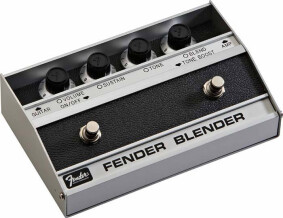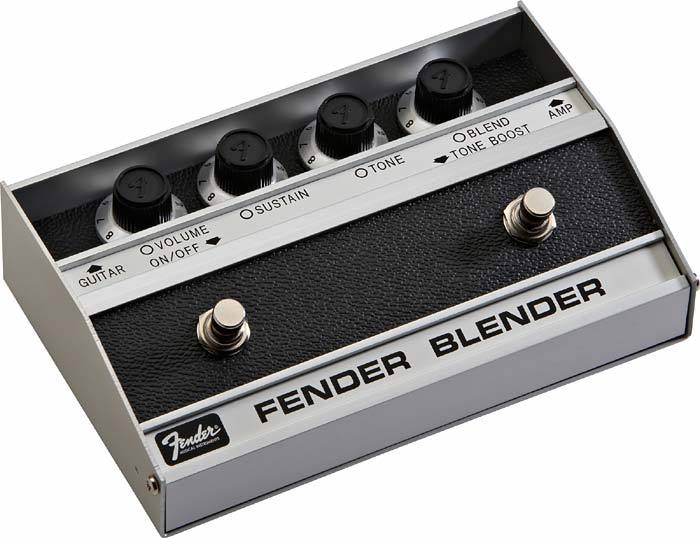Insatisfait(e) des avis ci-contre ?
Filtres
Nos membres ont également aimé :
3.8/5(4 avis)
75 %
25 %
Donner un avis
Avis des utilisateurs
 sat4nPublié le 22/08/08 à 20:36
sat4nPublié le 22/08/08 à 20:36 (contenu en anglais)The Fender Blender Custom is a reissue of the famous 1970s fuzz pedal. It doesn't have any modern features, unless you count true-bypass and a 9v power adapter jack. There are no lights or digital anything. It is supposed to use germanium transistors like the original, but unlike most germanium-based fuzz pedals, at least the ones I've owned, it takes the usual kind of power adapter, not the reversed polarity kind.
(contenu en anglais)The Fender Blender Custom is a reissue of the famous 1970s fuzz pedal. It doesn't have any modern features, unless you count true-bypass and a 9v power adapter jack. There are no lights or digital anything. It is supposed to use germanium transistors like the original, but unlike most germanium-based fuzz pedals, at least the ones I've owned, it takes the usual kind of power adapter, not the reversed polarity kind.
There are four knobs. Volume and Tone do what you'd expect. Blend strikes the balance between dry and wet signal (useful, because the effect is pretty crazy when not mixed with any unprocessed signal). The Sustain knob is supposed to do something like compression the way it's described in the manual, but it's really more like a distortion-level control.
There are also two foot switches: on/off and tone boost. The tone boost gives the treble a kick and emphasizes the octave-up element of the effect. With the tone boost off, it's more like a regular fuzz pedal (although a pretty abrasive-sounding one).
UTILIZATION
The sound this thing makes is piercing. You know in The Matrix when Neo screams and his scream turns into the weird sound like a dial-up modem? That's what this sounds like with the tone-boost on and the blend all the way up. You can mix in some dry signal to keep things more in control, but even then this is a pedal for people who like noise. Also, playing chords or anything harmonic makes weird things happen. Particularly when you play fourths, you get this weird sub-harmonic sound with a very ring-modulation-type atonality to it. It sounds like your guitar is haunted. By whales.
SOUND QUALITY
This is an ice-pick in the head sound. If that's your thing then cool. There is no real way to tame this pedal. Mixing (blending) in dry signal makes the effect quieter, but not less extreme. This pedal is not, nor does it try to be, some bluesy smooth overdrive or creamy violin-like distortion. Again, this sound is going to be exactly what some people want, and is not going to sound like music to others. The important thing to remember is: it makes that sound. It cannot be prettified or cleaned-up. It always sounds like a buzz-saw.
OVERALL OPINION
I got this pedal a couple of years ago because nothing else sounds quite like it and I thought I would want to have that sound at the ready should the need ever arise. So far, I've not had a real reason to use it, other than just messing around by myself. I guess I was thinking maybe somebody in my band might one day ask me to contribute a guitar solo that could also serve as an implicit critique of music as an art form, but that hasn't happened. Yet.
I should note that I've not tried an original 1970s four-knob version, though I did used to have a three-knob a while back. The original three-knob sounded better to me than the reissue four-knob, but they can't really be compared as the three- and four-knob versions of the Blender were always, I'm told, different beasts.
Surely this pedal is useful for somebody in creating his or her signature guitar tone, and I think anyone who appreciates the noisiness of some of the weirder Hendrix stuff can also appreciate and find a use for this pedal once in a while. But it only makes one sound, and that sound is something that average audience can tolerate for maybe a minute or two in the course of an evening.00






